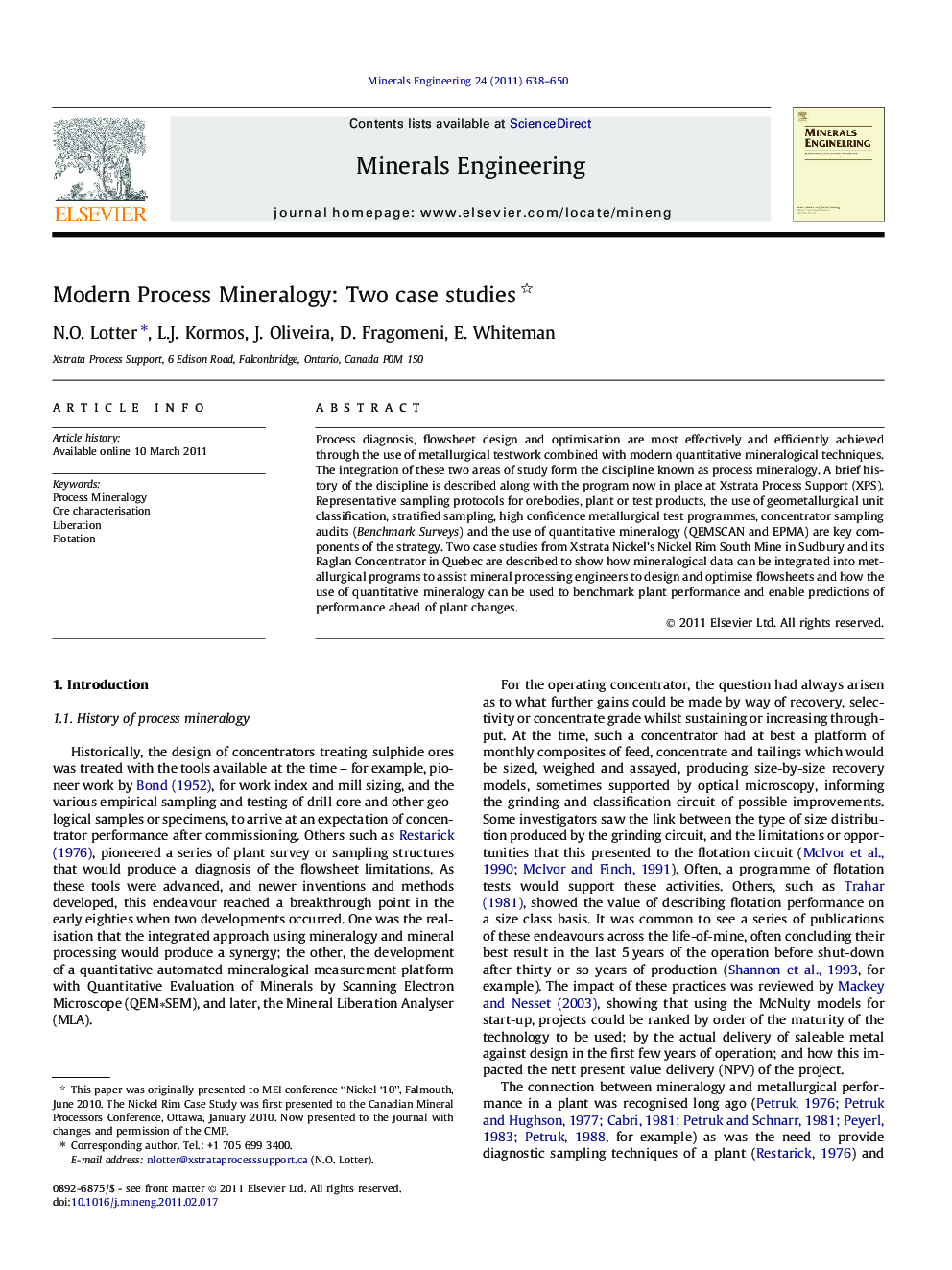| Article ID | Journal | Published Year | Pages | File Type |
|---|---|---|---|---|
| 233814 | Minerals Engineering | 2011 | 13 Pages |
Process diagnosis, flowsheet design and optimisation are most effectively and efficiently achieved through the use of metallurgical testwork combined with modern quantitative mineralogical techniques. The integration of these two areas of study form the discipline known as process mineralogy. A brief history of the discipline is described along with the program now in place at Xstrata Process Support (XPS). Representative sampling protocols for orebodies, plant or test products, the use of geometallurgical unit classification, stratified sampling, high confidence metallurgical test programmes, concentrator sampling audits (Benchmark Surveys) and the use of quantitative mineralogy (QEMSCAN and EPMA) are key components of the strategy. Two case studies from Xstrata Nickel’s Nickel Rim South Mine in Sudbury and its Raglan Concentrator in Quebec are described to show how mineralogical data can be integrated into metallurgical programs to assist mineral processing engineers to design and optimise flowsheets and how the use of quantitative mineralogy can be used to benchmark plant performance and enable predictions of performance ahead of plant changes.
Research highlights► Integrated use of several disciplines in Process Mineralogy. ► Specific tools developed. ► Two practical case studies. ► Flowsheeting implications clearly identified.
